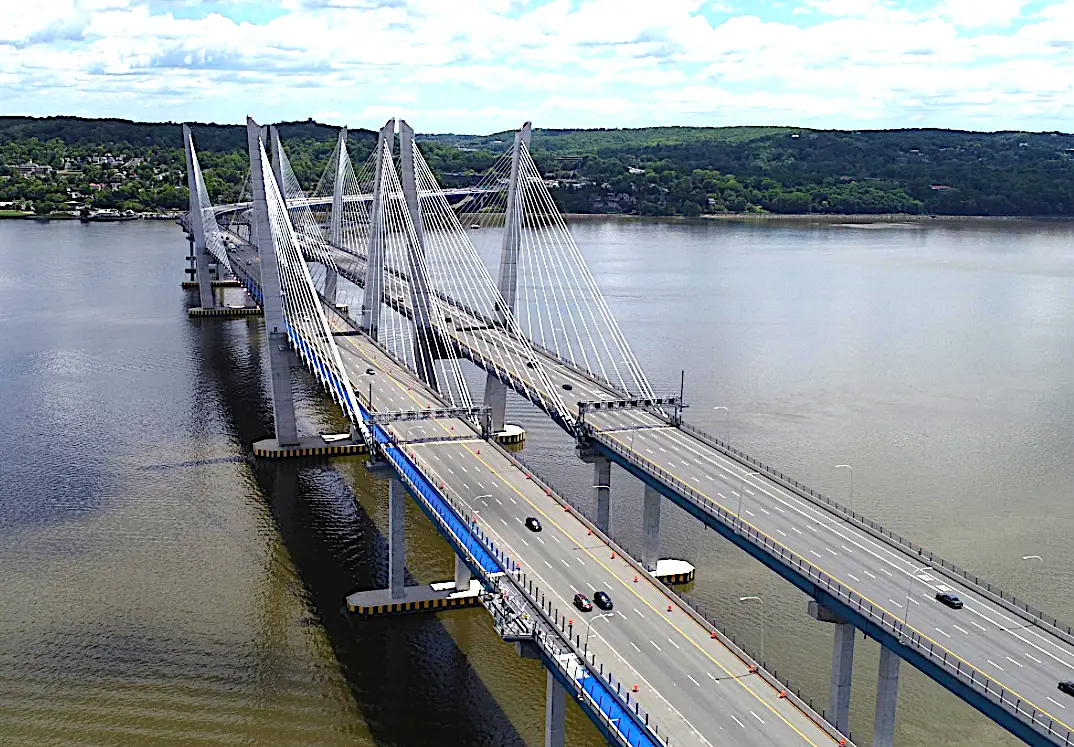Thruway Authority sues Mario M. Cuomo Bridge builders over components
The New York State Thruway Authority (NYSTA) has filed a lawsuit in State Supreme Court in Albany alleging that entities involved in building the new Mario M. Cuomo Bridge that replaced the Tappan Zee Bridge failed to provide certain components that comply with contract requirements and have failed to make good on the situation.
The lawsuit names the first defendant as Tappan Zee Constructors LLC, which is based in Tarrytown and is a consortium of companies. Also named as defendants are Flour Corporation, Granite Construction Incorporated, Traylor Bros., Inc., American Bridge Holding Company, Zurich American Insurance Company, Fidelity and Deposit Company of Maryland, Federal Insurance Company, Liberty Mutual Insurance Company, Travelers Casualty and Surety Company of America, and National Union fire Insurance Company of Pittsburgh, PA.

According to a statement from Thruway Authority spokesperson Jennifer Givner, “NYSTA and Tappan Zee Constructors (TZC) have a dispute regarding material compliance of several stay cable anchorage components. NYSTA asserts that these components are not contractually compliant and require remediation. TZC has disagreed and refused to act in accordance with their contract.”
The new Cuomo Bridge uses a “cable-stayed” design to hold up the roadway rather than a “suspension cable” design. The main span is supported by eight 419-foot towers. Attached to the towers are 192 stay cables that have their other ends anchored to hold up the road deck. The cables are composed of approximately 4,900 miles of steel strands. In a suspension bridge such as the Bronx Whitestone Bridge, thick main cables are draped over the top of the bridge’s towers to transfer their loads rather than having thinner individual cables directly affixed to the towers.
The NYSTA’s complaint alleges that the components in question did not meet specifications and the responsible parties have refused to take responsibility for making sure that the components do meet specifications and are acceptable.
“To ensure contract compliance, NYSTA has filed a lawsuit to recover the costs of evaluation and remediation of these components,” Givner said. “Simultaneously, NYSTA has begun the process to retrofit these components, under the guidance of nation-leading experts in material science, engineering and design. NYSTA has also commissioned a full independent safety review of the GMMCB (Gov. Mario M. Cuomo Bridge), which determined that the retrofit of the components is necessary to ensure their durability and full service life that toll payers paid for.”
The complaint was filed on behalf of NYSTA by Attorneys Stephen B. Shapiro, Timothy B. Froessel and Connor G. Luff of he Manhattan-based law firm Holland & Knight LLP. It has six causes of action each seeking damages against a particular defendant in an amount of not less than $1,000,000. In addition, the lawsuit asks for costs and disbursements of the action along with attorneys’ fees and any other relief the court deems just and proper. The lawsuit shows that the contract price for building the bridge was more than $3.141 billion.